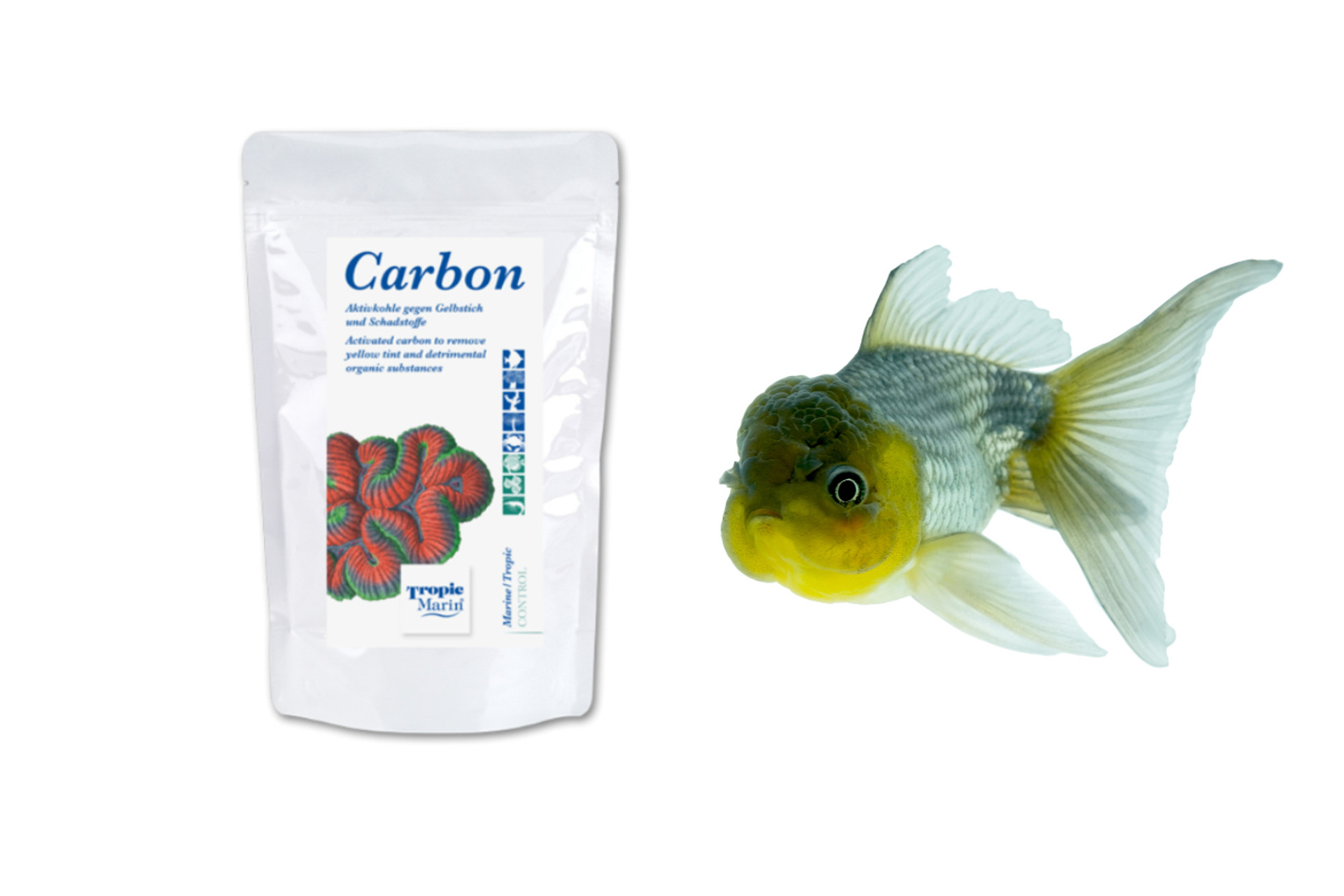Using Tropic Marin Carbon

In the beginning, there was carbon. Literally. This is one of the universe's most important elements. It forms the backbone of nearly everything living that we know of and is the fourth most common element. Its symbol on the elemental table is C and its number is 6. Activated carbon is a porous form, created by heating materials high in carbon in the absence of oxygen, increasing its surface area and making it extremely effective at binding contaminants. It's used for filtering everything from air and other gasses to drinking and aquarium water. It is one of the oldest and best technologies humanity has for filtration.
Over the years, activated carbon has remained largely the same with one notable exception. The process by which we make it has been refined dramatically, and so now, high quality products like Tropic Marin Carbon now have much more uniform size and dramatically less dust. For us aquarium geeks, this means better filtration for our tanks, and less rinsing in our process.
Some of you are undoubtedly thinking something along these lines: “well, I already have mechanical filtration and biological filtration, why do I need carbon too?” There are a lot of reasons to use activated carbon, but in a nutshell, it is because mechanical filtration (think filter socks or filter floss) and biological filtration (think bio-balls and ceramic media) don't offer anything in the way of chemical filtration. Chemical filtration is important in removing the yellowing compounds that will slowly degrade the aquariums aesthetic and also block a surprising amount of light from penetrating the water, and in so doing, inhibit the growth of your invertebrates (while making them look uglier). It's also of critical importance for the mixed reef keeper. Many corals have chemical defenses and will emit substances that inhibit the growth of other corals around them. This chemical warfare is also a prime culprit in why some aquarist's corals turn brown...
Tropic Marin Carbon is highly efficient; it has powerful capacity for adsorbing (the ability to bind stuff) yellowing agents and harmful substances without releasing excessive phosphates or silicates which can fuel other aquarium nuisances. In large part because of its efficiency, Tropic Marin Carbon can be used in relatively small amounts. Three ounces of it is plenty for a 55-gallon aquarium in all but the most heavily stocked systems. As a baseline, we recommend filtering about 1% of the tank volume per hour. So, your 55-gallon aquarium would only need to filter about half a gallon a minute at a minimum. This carbon should be replaced every four to eight weeks depending on your biological load and your filtration rate. Another way to utilize Tropic Marin Carbon is to power filter with it, using about twice as much carbon, and pushing a much higher flow through it over a few days. This is useful for tanks that have been medicated to remove the treatment, or tanks that haven't been chemically filtered for an extended period to clear them up.
Using carbon in your tank can be as simple as putting a bag of it into your sump, or as complex as a reactor system to push exact flows through an exact amount of carbon. The second option is obviously more effective, but for those of you that don't want that extra equipment, a bag in the sump will also be quite useful. All carbon, no matter how well it is made should be rinsed before putting it into your system. There will always be some dust, and you don't want this getting into your tank. It can irritate the gills of your fish and your corals. Luckily, this is a very easy job. Just put the carbon you'll be using into a bag or other suitable container and rinse it until it runs clean (preferably in non-chlorinated water). Then add the carbon to your filtration mechanism of choice.
While we touched on this briefly, it is important that you regularly replace your carbon, regardless of your brand choice. There is a limit to how much gunk it can adsorb, and once you hit that limit, it doesn't pull anything new from the water without releasing something first. It will also start to physically break down. You really can't replace your carbon too often, except for the cost of doing so. The schedule we laid out earlier will work for the vast majority of you, but if you have a tank that is densely populated with different corals or a lot of fish, think about ramping up your replacement schedule. All things being equal, it would be better to use less carbon, and replace it more often, than using more carbon, and replacing it less frequently. Lastly on this topic, don't reuse your carbon. We know, you rinse it in the sink, and it looks and smells fine again, but it isn't. Once the filtration capacity is spent, that carbon is over. You can toss it in the garbage, or if your community offers garden / food waste pickup it would be fine to add to that bin. You can also rinse it well and add it to your own compost pile; unless you are using a massive amount of it, it won't add too much salt to that mix and will offer an excellent source of carbon to your garden. As you now know, everything biological needs carbon to grow!
We recommend using Tropic Marin Carbon for every aquarium, whether your tank is a FOWLR (fish only with live rock) or a full-blown reef tank, or even a freshwater display, activated carbon has a place in it. With Tropic Marin, you can trust the brand to deliver you the cleanest, most consistent carbon on the market. Ask your Local Fish Store about getting you some from Quality Marine & Aquatropic today!